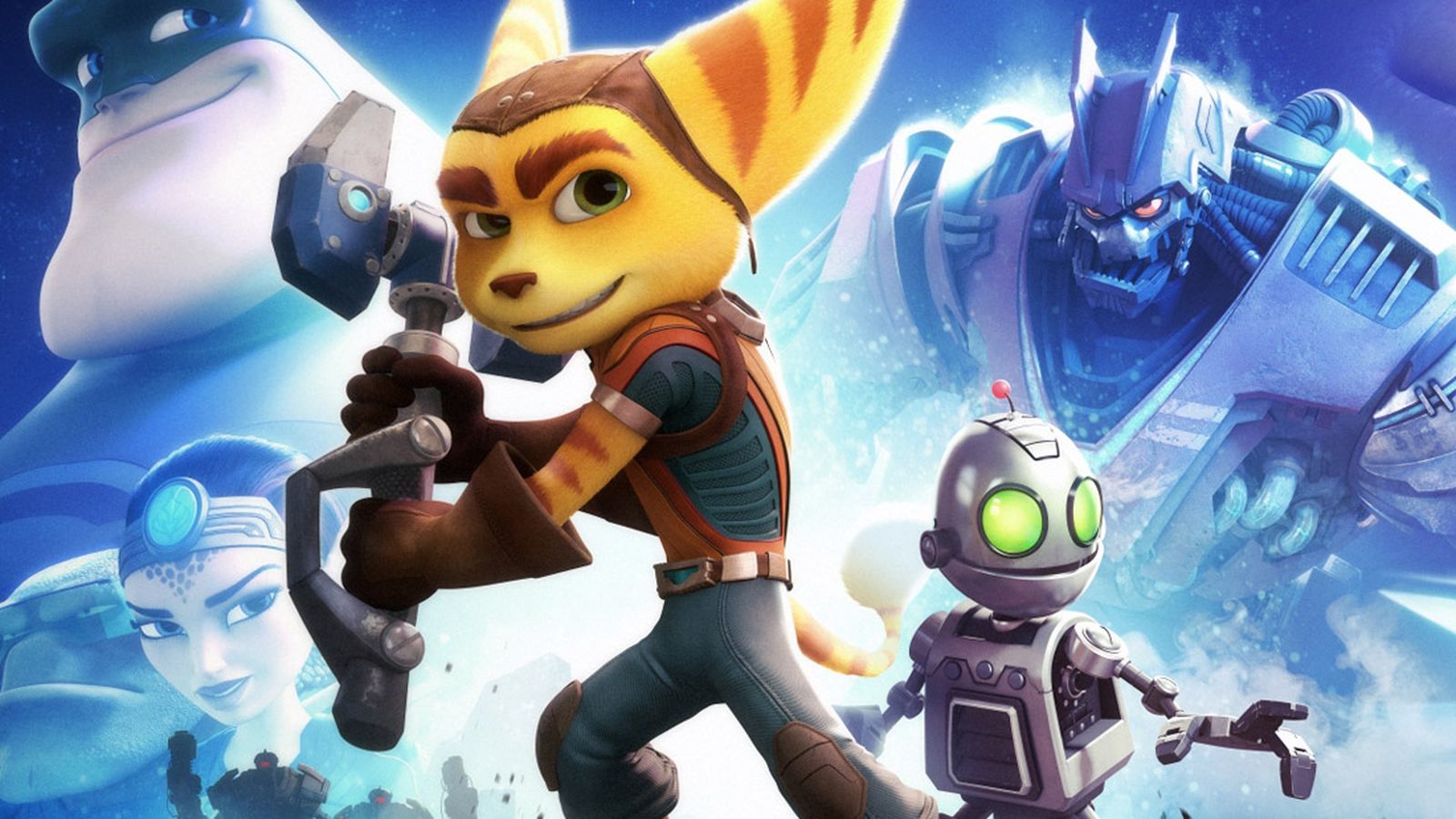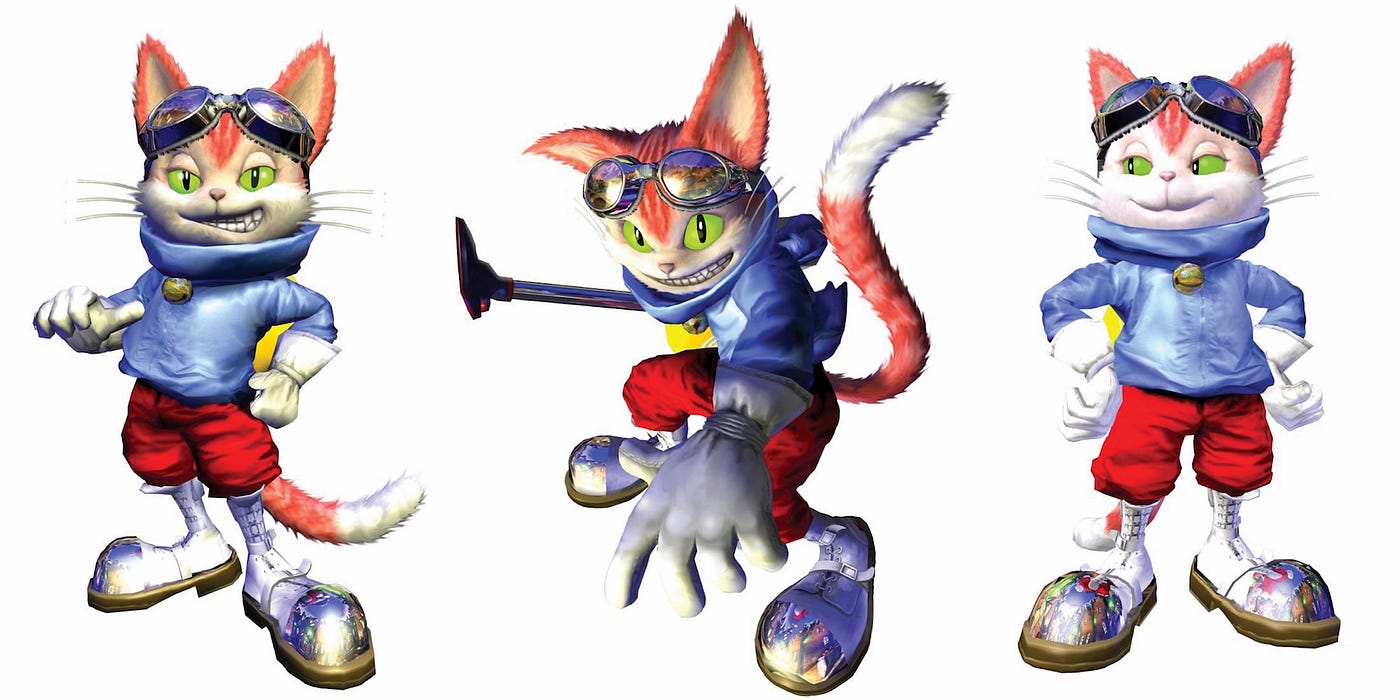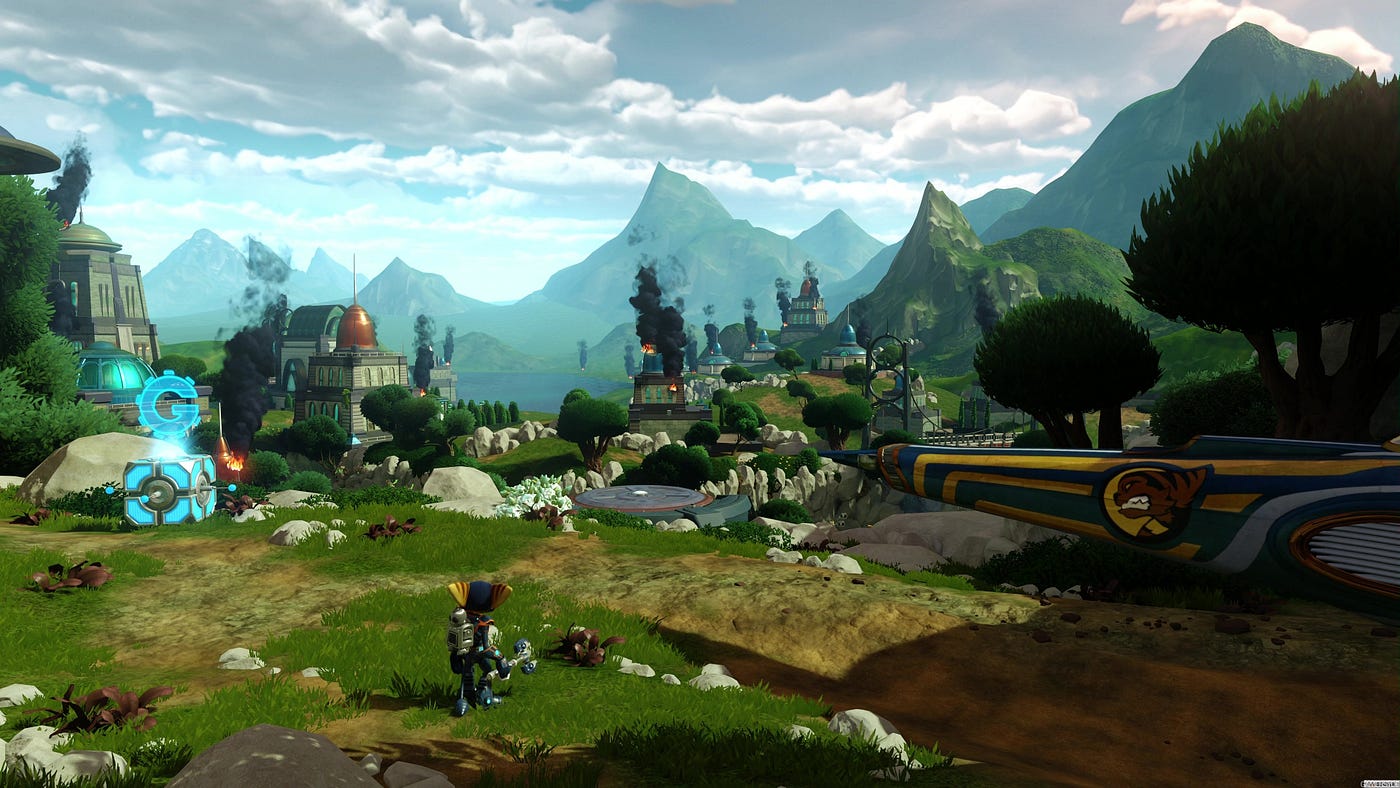Revisiting Ratchet & Clank
Remakes can be a good way to enjoy games you missed

I consider myself a fan of platformers, especially as a gamer who grew up on Super Mario Bros. in the ’80s and ’90s. In any important respect, this is the genre that Mario built — or at least, he converted it from something that might have been an obscure oddity to a juggernaut that felt like it defined the video game industry for many years. After all, no matter what games you played in the ’90s, it often felt like the rivalry between Mario and Sonic was the main event (with the Street Fighter versus Mortal Kombat contest being an adjacent — but somehow less cataclysmic — turf war).
There were many pretenders during that period (I’m looking at you, Bubsy). Some of them were actually pretty good (I didn’t mind Earthworm Jim). But as good as these newcomers were, they somehow never felt like the real thing to me — Mario and Sonic were always fighting for a place in my heart and, truth be told, I loved them both (Mario felt like my ever-loyal spouse — someone who could always be depended on to deliver every time— where Sonic felt like a summer fling; exciting, edgy, even a little risky, but never solid enough to sign the divorce papers with Nintendo and fully commit). If that analogy makes it sound like these franchises were earth-shatteringly consequential to my life, well…they were. I grew up with these characters; they were as significant to my childhood as any popular culture can be.
3D platformer explosion
My interest in platformers continued as the genre moved tentatively into 3D. Super Mario 64 was the revolutionary experience that validated my marriage to Nintendo, and unfortunately, Sonic began to fade from my consciousness. I think of that period of early 3D platformers like an enormous house party that was just heating up; it felt like Sonic had excused himself from the party early, as if to study for some imagined future exam. Boring. He was missing all the action! And, sure enough, there were plenty of contenders ready to take his place alongside Mario.
It’s probably a good time to fast-forward a little; we all know the history from that point forward. Some truly major franchises were launched that opened up the platformer genre in new ways, and that demonstrated Mario’s way was not the only way. Crash Bandicoot proved to have much more staying power than I had initially expected (given that, at first glance, he appeared to be little more than a fairly hollow reaction to Mario). The utterly superb Jak & Daxter felt like a more sophisticated — and genuinely clever and engaging — experience. Both franchises were produced by Naughty Dog, which can now rightfully be discussed alongside Nintendo without any reservation.

Around the GameCube and PlayStation 2 era, the market appeared to be flooded by various 3D platformers — many of them were quite good, too. The platformer genre became a staple of 3D gaming, and it definitely seemed to me that no gaming platform was complete without its own solid Mario competitor.
Maybe it’s because there were so many platformers to choose from — or maybe I was just getting a little burnt out on the genre — but there were numerous games of that vintage that I simply never played. In my mind, the most significant one was Ratchet & Clank, which debuted in 2002 for PlayStation 2.
Ratcheting up the pressure
I’m not entirely sure why I ignored Ratchet & Clank, although in retrospect, I have some theories. I think that part of me was a little tired of the constant flood of new 3D platformers. But there was something about Ratchet & Clank that actually annoyed me — its characters looked derivative; when I looked at them, I saw what I thought was an obvious attempt to create the next marketable mascot. That irked me. And the inclusion of third-person shooting elements felt timely in a way that almost seemed cynical; remember that in addition to 3D platformers, the gaming world was also going through GTA mania — this unholy union of marketable mascots with third-person shooting seemed to me like a transparent attempt to create the next hit, rather than to create a genuinely interesting game on its own terms.
I’m the first to admit that this is the ultimate case of judging a proverbial book by its cover. It’s something I actively try to avoid doing now (you’ll know this if you heard my recent comments about Metal Gear Survive on the Super Jump Podcast).
At any rate, I’ve largely ignored the Ratchet & Clank franchise since its inception. All that changed just a few days ago, as I began playing a title that’s been sitting on my backlog since 2016. The new game is simply called Ratchet & Clank, and it is apparently a “reimagining” of the original title that is also based on the film adaptation. I haven’t seen the film (which is possibly a good thing, according to critics at least), but I have been eagerly playing my way through the game itself.
Now, I know I’m extremely late to the party — and maybe there are very, very few people out there who haven’t played this game — but holy crap, Ratchet & Clank is fantastic.
A pedigree to be proud of
One reason I shouldn’t have dismissed the original Ratchet & Clank so easily is because of the developer behind it: Insomniac Games. As a studio, Insomniac has definitely has its share of misses — but I think it’s fair to say that their heights have been very lofty indeed.
It turns out that I’d played one of their other platformers — Spyro the Dragon — on the original PlayStation. Although Spyro was a mechanically simple platformer, I remember its bright, cheerful visuals popping off the screen. I also remember it having a surprising level of polish, which was fairly unexpected from such a new studio.

More recently, Insomanic Games produced one of my favourite titles in recent memory and what I see as easily the best game for Xbox One: Sunset Overdrive. I’m not going to gush too much here because I could — and plan to — write an entire piece dedicated to that crazy neon fever dream.
It’s fair to say that Sunset Overdrive is actually the game that caused me to want to play Ratchet & Clank — more so even than the positive critical reception the latter received.
Planet-hopping with the Pixelator in hand
Ratchet & Clank incorporates gameplay elements from various titles in the series. As I haven’t played these games, the variety of options that Ratchet & Clank presents all feel new to me. And although this game comes with a glossy new coat of paint (which is, frankly, stunning), it’s incredible to consider how well some relatively old gameplay concepts stand up in 2018. I say this even in light of the recent release of Super Mario Odyssey, which arguably pushes at the boundaries of modern platformer design.
At its heart, Ratchet & Clank straddles a line that at least seems awkward at first glance. On the one hand, it’s a third-person shooter, featuring some decent (though simplistic) weapon and shooting mechanics. On the other, it’s a polished, pure 3D platformer, with fluid movement that incorporates several of the genre’s tropes (things like double-jumping, high-jumping, and slowing your fall through a hover-like mechanic).

What’s most remarkable to me is that Ratchet & Clank gracefully pulls of this dichotomy, in a way that feels natural and manages to combine both modes of play simultaneously — while you’re aiming a weapon, you can strafe around and backflip (kind of akin to a 3D Zelda); the second you stop aiming, you’re back in “regular” platformer mode, which doesn’t feel jarring. Items retrieved later in the game — like the jetpack — seamlessly combine these gameplay styles into a hybrid system that feels wonderful. Despite the numerous ways to explore the game’s world, the controls never once let me down, even as I was jumping around, strafing, shooting, and changing weapons on the fly. Insomniac Games clearly did the hard work to make the whole experience feel effortless for me as the player.
The weapons themselves are wonderfully inventive and they are all fun to use, regardless of your play style. Best of all, you’re actively encouraged to continuously engage with different weapons, and the combat encounters are varied just enough to facilitate this. The Combuster is probably the most standard weapon (a simple blaster), but it doesn’t take long to be able to purchase items like the Groovitron (fires off a huge disco ball that forces all enemies in its blast range to start dancing), or the awesome Pixelator (which instantly turns enemies into retro 2D sprite versions of themselves while doing significant damage).
As well as being mechanically satisfying, Ratchet & Clank places a much greater emphasis on its narrative than many platformers tend to do.
If I’m being reductive, then yes, much of the narrative simply provides a basic framework within which to encourage the player to pursue various gameplay goals. This isn’t a bad thing in itself though, and in any case, Ratchet & Clank displays a continual internal awareness of both the obvious “gameyness” of its various scenarios while also playing up video game or platformer tropes for comedic effect. Like Sunset Overdrive, there is an omnipresent narrator who chronicles your journey while also acting as a kind of fourth-wall-breaking guide. The narrator will regularly exclaim about the overtly gamey things that happen (such as when you “convenient find an item in just the right location at the right time!”)
The self-referential humour not only smoothes elements that could otherwise be obvious narrative bumps (or that could require further unnecessary plot exposition), but it also provides a continual wink to the player directly from the developers — it’s as though, playing through this game, the developers are constantly watching you in a way that both celebrates and lampoons video game tropes. It’s wonderful, and I feel like Insomniac Games have developed a very specific and individual brand of in-game humour that feels distinct to them as a studio.
Play the damn game!
I’ve rambled quite a lot here, I know. I didn’t really set out to write a concrete review of Ratchet & Clank. For one thing, I haven’t yet finished it, and for another, it’s been out since 2016. There are a million reviews out there that will clearly articulate the pros and cons of the game.
The reason I’m writing this article is really twofold:
- Insomniac Games are quickly becoming one of my favourite developers. I’m unbelievably excited about their upcoming Spider-Man title, which looks like it might represent the epitome of Insomniac’s brilliant skill around building fluid mechanics in large interactive worlds.
- I missed out on Ratchet & Clank when it first came out. Playing it now, I fully understand why it was so popular, and I’m thoroughly enjoying the process of discovering everything it has to offer, regardless how late I am to the party.
Another point worth considering is whether or not I’d be playing this game — and writing this article — if it weren’t for the fact that this is a “reimagining” of a much older game. Yes, HD remasters are great, and remasters are better, but this reimagining is really a treat. It feels like Insomniac Games took the very best of this franchise and pulled it together into one cohesive package.
So, if you never played this series — or if you played and enjoyed earlier games in the franchise — I think the new Ratchet & Clank is a must-play title.
